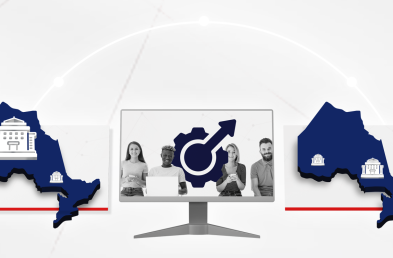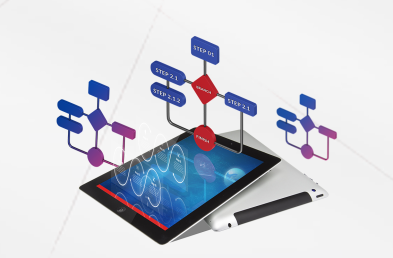We often think that creativity is a matter of having a wild imagination, creating colourful worlds in our heads and being able to translate that into some kind of visual art. It’s a common mistake to mix those concepts, but it would also be a mistake to say that they are unrelated at some point. Artists are extremely creative people, but there is something they do that separates them from just having a wild imagination.
Imagination can be considered a process that lets thoughts run freely, in chaos and without limits. Creativity, on the other hand, is purpose-driven. It is meant to solve a problem and works based on information to develop new ideas.
A third concept tied to Creativity is Innovation. Innovation is our ability as individuals or teams to turn what we create into tangible solutions to foster value for our clients, community, or organization.
Many companies and organizations around the world are or want to be innovation-driven. They want to be considered a company that “thinks outside of the box” and can generate disruption through their offerings.
While this is true in many cases, many others are not. This is mainly due to confusion about what is what and how to foster a creative and innovative mindset and culture.
Let’s look at the What is What:
Creativity – it transforms into value. It is purpose-driven and problem-solving, taking many forms, from arts to business to daily life. Creativity is a key driver for growth.
Innovation – It is about transforming new or existing ideas into tangible solutions. Generally, we take risks and new approaches and experiment a little to reach different objectives. Innovation drives the market, fosters movement and development, and meets upcoming needs.
While these two concepts sound very similar and overlap at some points, one generates the other. Creativity breeds innovation.
The Creative Process
We can find many definitions of Creativity out there, especially when comparing different fields. The Creative Process is the one consistent approach taken by every creative mind around the world.
It can vary in its steps to fit different needs, styles, or approaches, but at its core, it is the same. The classic five steps that break down a process of creation and questioning that starts with curiosity:
- Preparation – Observe and analyze. Gather your data about the problem, your client’s needs, market trends and forecasts, and more.
- Incubation – Let it sit. Process that information and let your brain organize the ideas and what it has learned.
- Illumination – The well-known “Aha! moment”. When the main idea strikes.
- Evaluation – Working on that idea. Develop control points, execute, evaluate, and again. A cycle to determine the effectiveness of your idea.
- Implementation – Go live! Act on your findings and well-developed project.
We can simplify the Creative Process and adapt its steps to make our workflow more efficient and, as a result, innovative. We can focus on Planning, Execution, Controls and Evaluations, then repeat the cycle. We can include Design, Development, or Strategy and establish mini-creative processes within the general approach.
The goal is to keep the creative juice flowing and work in a way that gives us results aligned with our objectives.
Maintaining a creative approach and mindset is simple but needs to be consistent. Creativity needs to be fed and empowered to grow.
- Be Curious – Ask silly questions, explore, read, and challenge assumptions.
- Embrace diversity, differences, and perspectives – Look at everything with an open mind.
- Mindfulness – However that is for you, meditation, reading, outdoor time, engage in activities that free up your mind.
- Collaborate – Teamwork is dreamwork. Brainstorm, debate, help each other, make jokes and build upon different ideas.
- Relax and breathe – Taking breaks is important to avoid saturating ourselves with information or workload.
How to Foster Innovation?
Start by building a creative environment where exploration is encouraged, and people look forward to the collaboration, constructive criticism and overcoming challenges.
Ensure teams across the organization embrace change and have a flexible workflow that supports pivoting and new ideas. Taking risks is a mindset that must be welcomed in the organization, and it comes with the freedom to pursue actions and build motivating projects.
Finally, empower your team. Establish a process that covers the needs of your employees to achieve their goals and provide resources and support. Listen to their ideas. With that, focusing on Customer/User needs will lead your creative efforts across the organization.
There is no denying that Creativity and Innovation are drivers for success. To that, we can add drivers for culture, relationships and development in different areas of life.
And while the Creative Process sometimes can be challenging, there are many things we can do to help ourselves and each other to have consistent creative practices – having a forward-thinking mindset, embracing change, taking risks, asking questions, being silly, and focusing on developing informed solutions.
A creative approach in our daily lives will help us drive meaningful progress and growth. Do you have new ideas you would like to share with us? Just send us a message!




